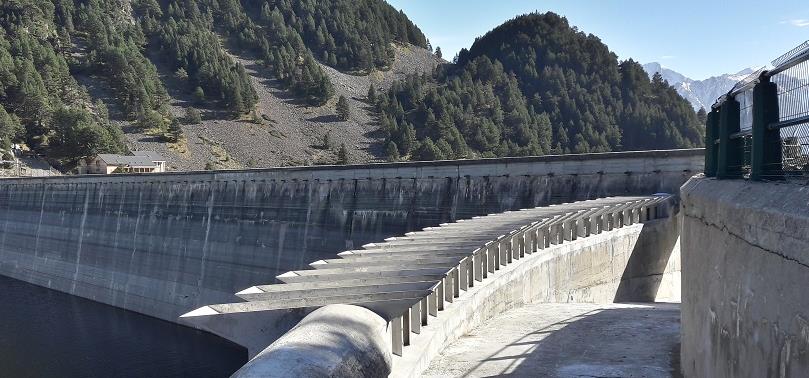Location
Atlanta, GA
Presentation Type
Presentation
Start Date
10-7-2025 11:35 AM
Description
In Sweden, many dams are undergoing upgrades to comply with the revised dam safety guidelines, which mandate higher spillway discharge capacities that their existing ones. As part of an ongoing project, a piano key weir (PKW) is proposed to replace an embankment dam and simultaneously increase the facility’s discharge capacity. The PKW configuration is evaluated in a 2 m wide flume at two geometric scales (1:35 and 1:12) to assess potential scale effects. The former comprises eight units, while the latter includes three, with all components produced using 3D printing. Results indicate that the 1:35 model exhibits a slightly lower discharge capacity, likely due to scale effects. To further investigate, a 1:35 scale floor model is constructed using CNC milling to replicate the river bathymetry, the existing spillway with three tainter gates, and the proposed PKW consisting of 24.5 units. When scaled to prototype discharge levels, this model demonstrates a somewhat lower capacity than both flume models due to real approach conditions, though the differences between them were minor. In addition, the CNC milling technique yielded greater manufacturing accuracy compared to 3D printing. The findings offer insights for future PKW designs and scale model testing in similar applications.
Included in
Model-Prototype Upscaling of PKW Discharge Capacity
Atlanta, GA
In Sweden, many dams are undergoing upgrades to comply with the revised dam safety guidelines, which mandate higher spillway discharge capacities that their existing ones. As part of an ongoing project, a piano key weir (PKW) is proposed to replace an embankment dam and simultaneously increase the facility’s discharge capacity. The PKW configuration is evaluated in a 2 m wide flume at two geometric scales (1:35 and 1:12) to assess potential scale effects. The former comprises eight units, while the latter includes three, with all components produced using 3D printing. Results indicate that the 1:35 model exhibits a slightly lower discharge capacity, likely due to scale effects. To further investigate, a 1:35 scale floor model is constructed using CNC milling to replicate the river bathymetry, the existing spillway with three tainter gates, and the proposed PKW consisting of 24.5 units. When scaled to prototype discharge levels, this model demonstrates a somewhat lower capacity than both flume models due to real approach conditions, though the differences between them were minor. In addition, the CNC milling technique yielded greater manufacturing accuracy compared to 3D printing. The findings offer insights for future PKW designs and scale model testing in similar applications.


